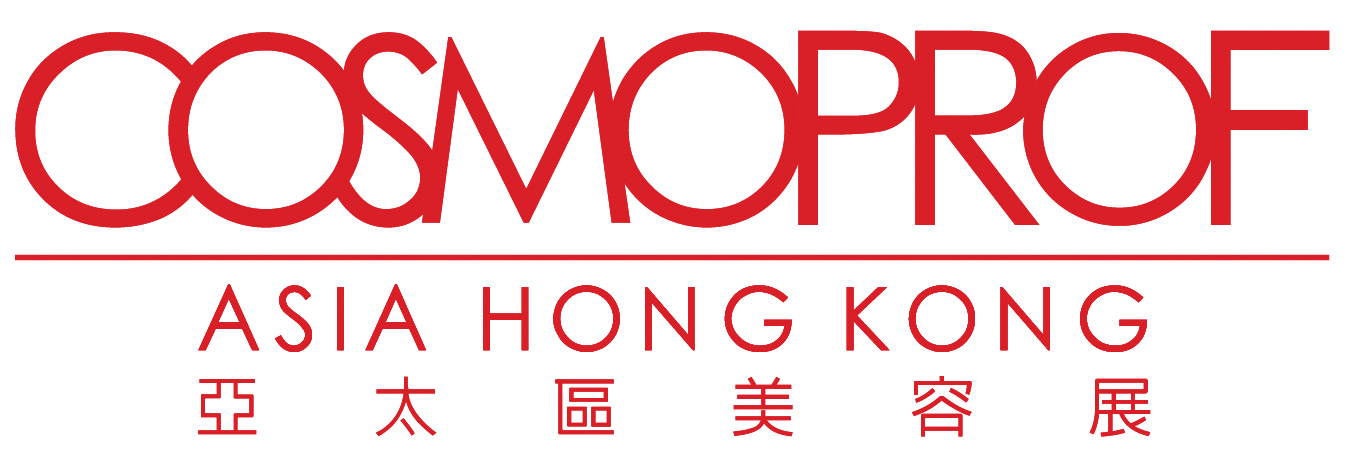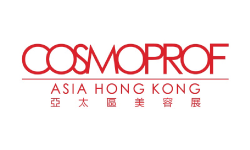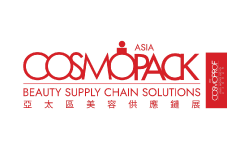Is holistic beauty trying to be all things to all people? The two principles that define the approach—“inside,” with dietary supplements, and “outside,” with topical skincare—remain difficult to combine. Although the sector is unstructured, it is growing and responds to scientific and social trends associated with longevity and mental well-being. For researchers, holistic beauty stands at the crossroads of biotechnology, neuroscience, and microbiome studies. For consumers, the watchwords are indulgence, relaxation, and pleasure.
As the saying goes, beauty is on the inside—a multi-faceted idea can be viewed from many angles, including philosophical, spiritual, artistic, psychological, and, yes, dietary. We are what we eat, and the ingredients of good health are reflected in our skin, hair, and figure.
The dietary supplement industry has stepped into the breach, creating the flourishing nutricosmetics market and its abundant offer of beauty-focused ingredients, ranging from vitamins (one for every letter of the alphabet) and minerals to fatty acids, proteins, and more. What if these were combined with a good cosmetic cream—would that enhance beauty even further? While tempting, this approach has yet to be widely accepted. For the moment, no one has established if there is any real benefit to combining topical skincare with an ingestible product. While this is a believed to be the case, no studies or scientific proof back up this assumption.

Nutri Glow beauty drink powder ©myBlend
The ‘holistic beauty’ sector remains divided
Although highly publicized, the concept of “in & out” beauty still appears marginal in practice. It is the product of two different cultures, driven by two distinct industries, and the regulations governing each of these industries also vary around the world, given that food products and cosmetic products present different health risks. Despite the holistic vision the industry promotes, in & out beauty is ultimately binary, a condition reflected in the strategies of certain groups. For example, Korean brand Amore Pacific, a major reference in K-Beauty through its many cosmetic brands, also owns the nutricosmetics brand Vital Beautie, which is particularly active in the popular field of collagen. In this case, Amore Pacific’s brands are exclusively dedicated to topical skincare, while Vital Beautie only focuses on dietary supplements.
Asia may have a head start when it comes to consuming nutritional supplements, but consumers there do not necessarily consider ingesting a few molecules as part of their beauty ritual. Nor has the Japanese group Shiseido combined these two sectors—or to the extent that it has, only on a small scale: the brand Ulé, which it launched in 2022, and Gallinée, which it acquired the same year, both market health supplements, but these represent a minor offer within the company’s robust cosmetics ranges. Shiseido, which is foremost a cosmetics brand, is nevertheless showing increased interest in nutricosmetics: also in 2022, the company released a collection of three food supplements in Japan and China called Inryu and presented in attractive cardboard boxes reminiscent of classic compacts that positioned them within the beauty sector.

Inryu’s dietary supplements ©Shiseido
In early 2024, the brand significantly increased its presence in the segment with the creation of Shiseido Beauty Wellness (SBW), a division dedicated to well-being that currently includes three food supplement brands: The Collagen, an assortment of powders and drinks made with collagen, Tune Beaute, and Rootina. The last two brands were developed with partners outside of the cosmetics industry: Tsumura & Co, a pharmaceutical company focused on plant-based traditional Japanese medicine, and Kagome, specialized in plant-based beverages. These collaborations provide Shiseido with essential know-how it might not otherwise have access to in-house.
The potential of biotech
France, the world leader in cosmetics production, has a limited market for ingestible beauty products. Even L’Oréal, the global leader, is relatively absent from the sector. However, this may change through biotechnology, an area in which the company is heavily investing now via Bold, its venture capital fund.
In early 2024, for example, L’Oréal acquired a stake in Timeline, a Swiss company in the new anti-aging segment known as “longevity.” Timeline developed Mitopure, an ingredient made from urolithin A, a molecule purported to counter cellular aging. The formulas in Timeline’s product range, which includes capsules and flavored powders, have been developed around this active ingredient.
Longevity is beauty’s buzzword of the moment. Embodied by media figures like Harvard researcher David Sinclair and billionaire Bryan Johnson, the phenomenon arouses both fascination and concern.

“Rituel sérénité anti-âge” from Laboratoire Amaé ©Laboratoire Amaé
While longevity kindles hope of a slowed aging process—a more or less realistic possibility—it also veers off toward fantasies of eternal life and transhumanist ideology. Some of the controversy is also scientific. Ordinary mortals—because, alas consumers are still mortal!—get bogged down in the details of cellular decline. In any case, longevity is the ideal playground for cosmetics and nutricosmetics. Brands, for example, are now turning their attention to NAD (nicotinamide adenine dinucleotide), a coenzyme present in cells that decreases in quantity over time, a process that can be countered by supplementing with NMN (nicotinamide mononucleotide) or NR (nicotinamide riboside), precursors of the much-vaunted NAD.
A closer look at the microbiome
Another vast area of research is the microbiome and its rich bacterial makeup, which we now know influences our health. Intestinal bacteria, or microbiota, are often mentioned, but the term also applies to other environments with high concentrations of living micro-organisms.
The Gallinée brand has turned its attention to the cutaneous microbiome, which it aims to support with cosmetic formulas enriched with pre-, pro, and post-biotics, and corresponding gel capsules. The concept was developed in 2016 by Marie Drago, who holds a PhD in pharmaceutical studies, it gained popular appeal. This innovative approach eventually earned the brand a place in Shiseido’s portfolio.

The Gallinée brand has turned its attention to the cutaneous microbiome ©Gallinée
In this area, as in others, family businesses and start-ups are the ones taking risks and leading the charge. In France, many of them focus on synergies between inner and outer beauty, forming what could be the beginning of an entirely new market. These companies include the pioneering Holidermie founded in 2019 by Mélanie Huynh within Aera Nova, a luxury group created by her family; Laboratoire Amaé, created in early 2024 by Anne-Sophie and Eric Benet, and AWvi, founded in 2024 by Alexander Werz, head of communication agency Karla Otto, with the support of a group of marketing and beauty science experts.
Each company has its own unique brand image: technical, minimalist, and inclusive at AWvi, whose cosmetics, paired with powdered probiotics, feature a genderless look and formulas; sensory-rich and soothing at Amaé, whose eco-designed packaging contains formulas made in France and topical treatments that are used in combination with two food supplements, hydrating or anti-age, presented in glass vials (liquid solutions are more quickly assimilated by the body).

“The Skin Method” Gamme ©AWvi
Galenic goodies
Holidermie stands out with an abundant offer that includes health supplements made from Naticol, a marine collagen, in the form of chocolate bars, spreads, and even Nespresso coffee pods. These edible and drinkable cosmetics do allow for more pleasure. Chewable gummies, for example, are becoming increasingly popular.

Holidermie developed health supplements made from Naticol, in the form of chocolate bars, spreads, and even Nespresso coffee pods. ©Holidermie
“There is a desire to break away from the pharmaceutical image that dietary supplements have,” says Monia Merabet, Founder of We Out Wow, a French trends and forecast agency. “Combinations, especially with collagen, which cafés and chain stores can now offer in cocktails, ice cream, cookies, and more, create similarities with the world of cuisine. Not to mention the bone broth trend that brands are embracing. Collagen, along with other health ingredients like adaptogenic plants, can also be added to matcha, which has become the beverage of choice among young people after being popularized by influencers.”
New galenic products are going to emerge. Capsum, specialized in microfluidics, a technology that enables brands to enclose cosmetic formulas in small capsules, is currently developing an edible application with a partner client. “Everything has to be adapted to ensure, for example, that the alginate membrane melts better in the mouth,” explains Laurie Dewandel, Head of Communications for the company. “The final form might suggest a jelly or caviar. We put a lot of effort into making it look and taste good. A visually pleasing and appetizing formula contributes to a pleasurable experience and helps ensure that consumers actually take it.”

Capsum, specialized in microfluidics, is currently developing an edible application ©Capsum
The brain and emotions
This notion of pleasure as an end goal should be seen in the context of the wellness movement, which is inextricably linked with holistic beauty—an approach that is useful when considered in association with certain fields of scientific research, including the aforementioned microbiome. Today, there is much discussion about the brain-gut connection, which also involves the skin and has repercussions for emotional well-being. French biotech company Microphyt works within this field, investigating the world of microalgae with the aim of developing new natural active ingredients for both skincare and the intestinal microbiome. Just over two years ago, L’Oréal acquired a stake in the company.
For established brands, the quest for well-being may take the form of practices that encourage relaxation or even sleep aids. Itabü, a new French brand whose name means “beauty” in the language spoken by an Amazonian tribe in Columbia, where its Founder Johana Moreno Kuratomi is from, has chosen to focus on this niche. “Several studies point to stress and mental load among women, and that’s where I come in, in my own way,” she says. Itabü’s product line is based on the soothing properties of cannabinoids (which do not have psychotropic effects), present in both a face cream and two oils administered sublingually, a quick-acting formula that enters the blood system directly without passing through the digestive system. Itabü also offers a series of free meditation podcasts on its website and occasionally holds yoga workshops.

Itabü’s product line is based on the soothing properties of cannabinoids ©Itabü
Spa mindset
Massage, a variation on the “outer” side of holistic beauty, is another method that supports well-being. It begins with a range of tools, like those for the face and scalp offered by Holidermie—the brand has just added an eye mask made of rose quartz, a stone conducive to harmony and balance, if crystal therapy is anything to go by.

Holidermie’s eye mask made of rose quartz, and scalp brush ©Holidermie
Amaé has developed a series of self-massage protocols to educate consumers through its website and social media. “We collaborate with a facialist specialized in kobido, a traditional Japanese technique that involves stimulating certain pressure points depending on what health problems have been determined ahead of time; the face reflects a person’s physical and mental state,” explains Benet.
These kinds of brands are intrinsically attractive to beauty salons and spas, and the phenomenon also applies to hair. La Biosthétique, a brand marketed to a select network of hair stylists, takes a holistic approach by proposing hair products alongside a dietary supplement for hair and nails, as well as cosmetics and makeup, and well-being services.
“For each product we launch, we develop associated services that hair stylists can provide for their own clients,” says Philip Morano, Director of the brand in France. “These rituals include a welcome tray with herbal tea, a scalp diagnostic, a series of treatments, massages, or a hot towel treatment. It’s all made to measure and, for the client, extends the time they dedicate to self-care.” Hair spas are a popular trend.

La Biosthétique’s Hair & Nail Strengthening food supplement ©La Biosthétique
The power of beauty tech
Beauty tech can also be included in a holistic experience. Technology solutions are increasingly present in beauty routines because they are believed to increase the effects of skincare treatments–and in some cases even replace a cosmetic—and encourage different forms of self-care. Manufacturers of these next-generation devices strive to make them more useful and pratical.

Nuon Medical’s packaging-cum-tool ©Nuon Medical
Nuon Medical is one example: the packaging-cum-tool comes in the form of a cosmetic jar or vial featuring a cap that can be equipped with one or more modules that treat the skin with vibrations, massage, hot or cold, micro-currents, LEDs, and more. And to keep everything within easy reach, this type of packaging be designed two compartments, one for cream and the other for… capsules?

myBlend’s “Nutri, Cosmeto, and Tech” range ©myBlend
The technology of the moment is low-level laser therapy with red and infrared LED, whose tissue-repair properties are used in oncology to reduce certain side effects of cancer treatments. When applied to anti-aging treatments, the technology is administered in the form of masks that are worn several minutes at a time. myBlend, from the Clarins group, commercializes a mask that can be used in tandem with a cosmetics line and associated powdered microbiota dietary supplement. Lucibel.le, a company formed by a group specialized in LED, stands out in this market with a mask designed by Olivier Lapidus and made entirely in France. The company has developed modules for home use and also supplies spas operated by Dior and Holidermie, among others. Lucibel.le’s device is also used at 48 Collagen Café, a hip Parisian café-spa where consumers can taste unique collagen beverages and indulge in a red LED session—just one more experience in the limitless world of holistic health.










